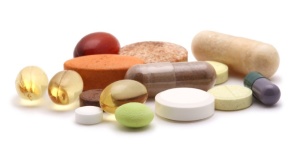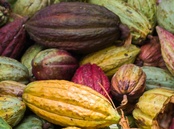Know Your Vitamin Pill – What’s In It?
If only taking a vitamin pill was the same as eating the real thing, like eating fruits and vegetables. Science wants us to believe that they can simulate anything and everything that nature has to offer. This might be true, to a certain degree but at what price? There always seems to be a tradeoff, a compromise, a side effect.
We were all made to believe that supplements are taken as a health insurance to improve your health, reduce the risk of chronic disease or condition, beat stress, lose weight, boost energy and the like. These are a few of the many promises the multi-billion-dollar pharmaceutical companies are trying to claim. But can vitamin pills really deliver the health and vitality they are promising?
Let’s take a quick review of the pros & cons of dietary supplements, and compare naturally occurring vitamins and their synthetic counterparts.
Vitamin E, in foods, is effective against ageing, oxidative stress, restless leg syndrome, diabetes, cataracts and a host of other ills. Vitamin E in its synthetic form is petro-chemically derived, and can cause endocrine disruption.
Magnesium stearate has been shown to cause kidney stones and liver abnormalities. Since it is made by hydrogenating cottonseed oil, you risk consuming pesticide residue. Cottonseed oil has the highest content of pesticide residue of all commercially produced oils.
Supplemental Vitamin Pills are not what it usually tells you on its label.
Common fillers found in Vitamins:
BHT – This fat-soluble compound is used in jet fuels, rubber, petroleum products and embalming fluid. Research has linked BHT to bladder cancer, DNA damage, and gastric and lung cancer.
Boric acid – An antiseptic, insecticide and flame retardant. It is also connected to DNA damage.
Synthetic vitamin A – Petro-chemically derived product capable of causing birth defects.
Cupric sulfate – A herbicide, fungicide and pesticide.
Stearic acid – Prepared synthetically by hydrogenation of cottonseed and other oils, it contains pesticide residue. It is added as a lubricant and to hold tablets together.
Maltodextrin – This sugar is obtained by hydrolysis of starch. Used to add texture and as a flavour enhancer.
Modified maize starch – This filler is a derivative of corn that has been chemically altered to dissolve quickly and serves as a thickener. Most corn is GMO.
Sodium benzoate – Synthetic chemical used as a preservative. Can damage mitochondrial DNA.
Hydrogenated oil – Hydrogenation is the process of adding hydrogen gas to liquid oils. Hydrogenation leads to trans fats which contribute to fat-clogged arteries.
Potassium chloride – Colourless, odourless powder used to improve fermentation. Intestinal ulcers may occur with oral administration. Larger doses can cause gastrointestinal irritation, weakness and circulatory collapse.


